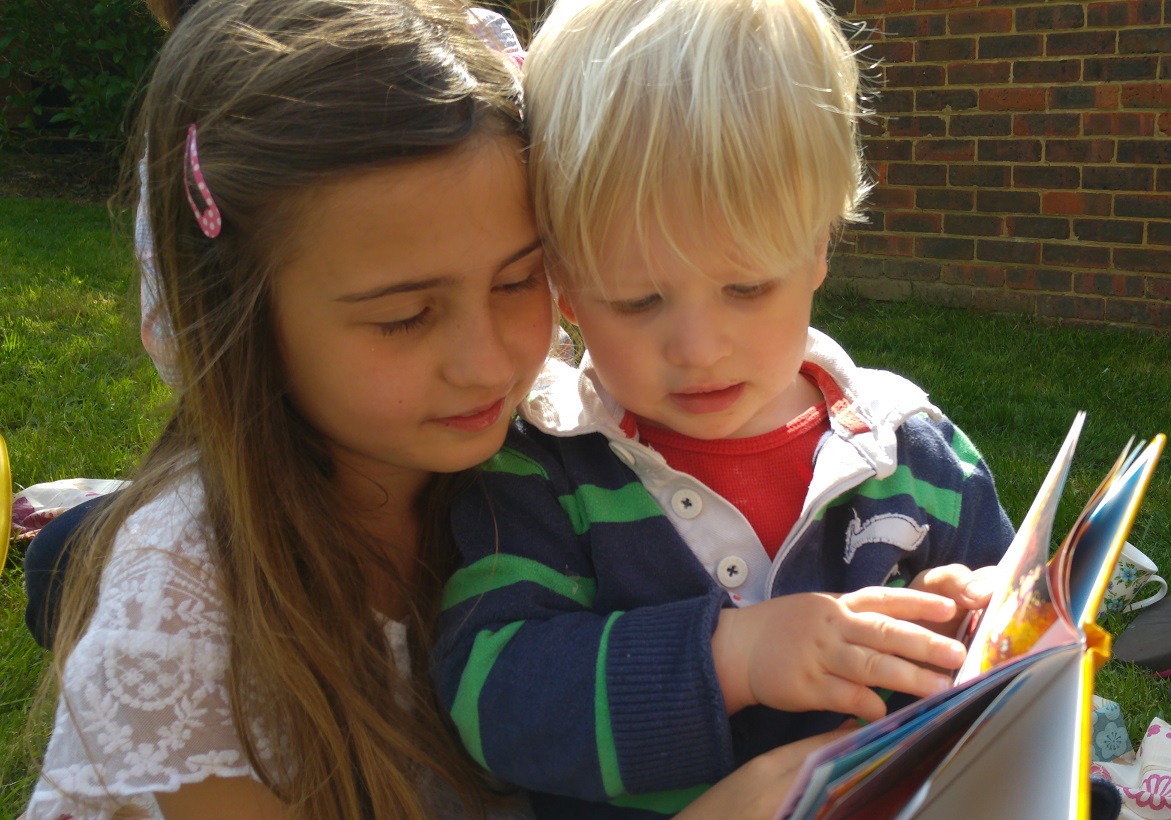Children's reading for pleasure in long term decline
Posted on Wednesday, March 30, 2022
Category: News

While more children's books are being sold, this isn't reflected in the number of children reading for pleasure, which is long term decline. However, research has shown that there are ways to help turn around this decline.
Publisher Farshore's Consumer Insights research, together with sales data from Nielsen BookScan, shows that the pandemic led to an increase in the number of children's books being sold - up from 324m in 2019 to £372m in 2021 (because of lockdown, there are no comparable figure for 2020).
The good news is that more 'light' and 'medium' book buyers (who buy 1-5 children's books each year) bought more books, so getting more books into the hands of children who might not otherwise have had them; nine million more books were sold in 2021 than in 2019.
Reading for pleasure in decline
However, the research also indicates that the long term decline in children's reading for pleasure continues. In 2012, 38% of 0-17s read 'every day or nearly every day' for pleasure; by 2021, just 25% of children read for pleasure. Over the same period, children who said they 'never read' has grown from 13% to 20%, so one in five children aged 0-17 - nearly 3 million children - did not read for pleasure at all in 2021.
Alison David, consumer research expert at Farshore, said, "That only 25% of children read daily or nearly every day is a concern. Reading for pleasure is linked to higher attainment - it's more influential on a child's academic success than their family's background, including where the child was born, their parents' education, their parents' income."
Research has also demonstrated that the impact of reading for pleasure on progress in vocabulary, maths and spelling is four times greater than whether parents have a degree. Further research by the National Literacy Trust correlates reading with mental wellbeing, while Farshore's research with families also found reading to children has a positive impact on family relationships.
Barriers to reading
Farshore's research into children's reading has found three main barriers to children reading for pleasure:
1) Children are not read to often enough
Children are most likely to be read to at the age of three to four, but even then only one half are read to daily. By the age of eight, only one in five children are read to every day. A key reason that parents and carers stop reading to children is because they see reading as a skill; once children can read, they stop reading aloud to them. However, reading to children shows them the pleasure it brings. Without that, they are not aware of the joy that reading can bring.
2) Most children prefer to spend time on screen with digital entertainment
64% of 0-17s would rather watch TV, play video games or go online than read books. Since 2014, the percentage of 5-10 year olds who spend more than two hours a day with a smartphone or tablet has grown from 13% to 36%. In 2021, 14-17 year olds spent six hours a day during weekends and school holidays using a screen; for 5-13s that was four or four and a half hours daily.
3) Many children think of reading as schoolwork and a task, not something they could enjoy.
Focusing on the skill of reading means that children often lose the desire to read for pleasure, particularly if parents don't read to them for enjoyment at home. With parents seeing reading as a skill and the focus on schools on literacy above reading for pleasure, both parents and children see reading as homework; as a skill and a task associated with school.
How can we encourage reading for pleasure?
1) Read aloud to children, at school and at home
Farshore's reading projects (for example, the Lockdown Reading Club) have proved that regularly reading aloud to children works - even for older children. "Reading becomes normalised, 'what we do' as a family. And it motivates children to read independently," says David. "They look forward to it and happily spend time away from a screen....reading aloud to children correlates with more independent reading."
Children who are read to daily or nearly every day are much more likely to read themselves on a daily basis - around two thirds of 5-13s who are read to daily or nearly every day by parents at home go on to read independently themselves.
2) Free choice
Children are motivated by feeling in control and they cherish opportunities to assert their autonomy and agency, says David. "We have found that when children are allowed to make their own reading choices it forms a commitment - they are invested in the decision and genuinely have intent to read." However, in schools they often have to follow reading schemes and at home, many parents try to control what they read.
3) Wide choice, wide variety
A variety of books needs to be made available to children, in both content and format. Children need to see themselves - and others - in books, so representation and inclusion are important, including different family types, experiences, ethnicity, gender, and so is offering a variety of content - magazines as well as books, fiction and non-fiction, popular culture as well as classics.
What do children typically enjoy reading?
Nearly half of children, 48%, prefer fiction and within that is a preference for funny stories, particularly among 8-10 year olds with 53% of boys and 60% of girls saying they enjoy them. One third of children, 33%, like fiction and non-fiction equally, while 19% prefer non-fiction.
Farshore's research also showed that children from ethnic minority backgrounds were less likely than children from White British backgrounds to favour fiction, possibly because that is the parents' preference, or because of the lack of representation and diversity in children's fiction - although this is changing.
Reading for pleasure in school
The challenge in schools is balancing the need to teach the skill of literacy whilst inspiring and motivating children to read for pleasure. "We know reading aloud to children works and at Farshore, we believe that daily storytime throughout the primary school years would have a transformative effect on children's reading for pleasure. If this were mandated, every child would enjoy the benefits, whether they were read to at home or not." Farshore's 'Stories and Choices' research project at a primary school found that regular storytime over one term led to children having greater motivation to read for pleasure, better wellbeing - and an increase in reading comprehension at twice the expected rate.
The CLPE Reading for Pleasure teacher survey 2021 - 2022, on reading practices in schools since the pandemic, says reading aloud 'was the most mentioned reading practice for making the most impact on children's reading and also the most mentioned practice being given an extra priority since the pandemic among respondents'.
How to encourage parents to read to children at home, however, remains the biggest challenge for schools, with only one third of parents of 0-13s recognising that children who read for pleasure do better at school in all subjects, and only 14% recognising that reading can have a positive impact on job prospects as an adult.
See Also: School budgets put the squeeze on reading for pleasure
